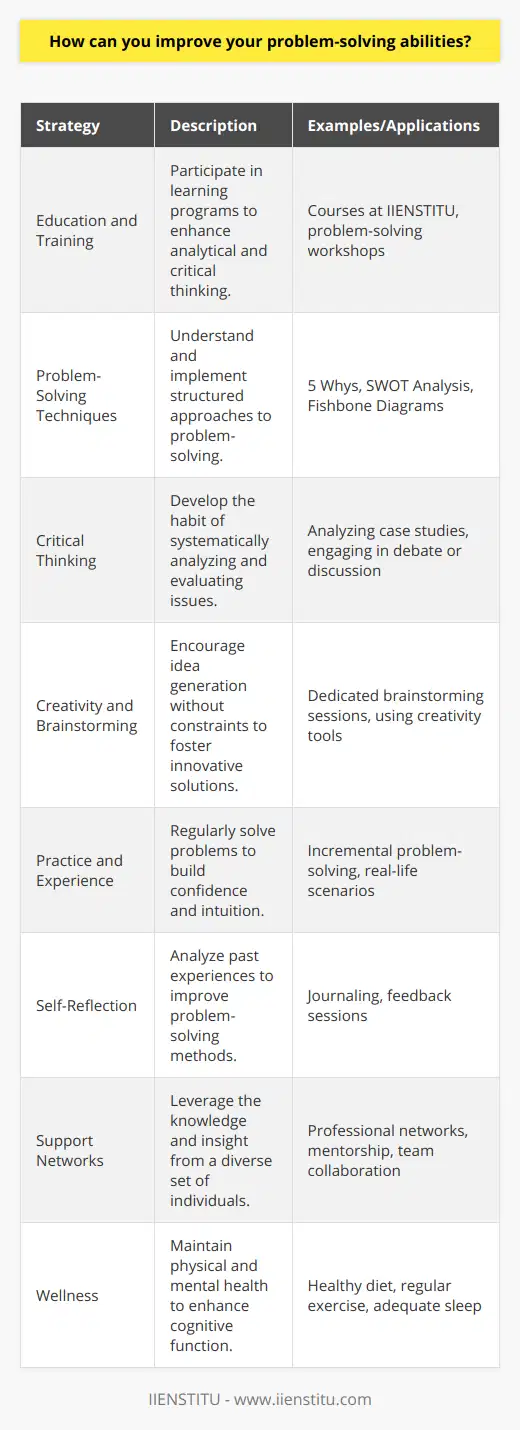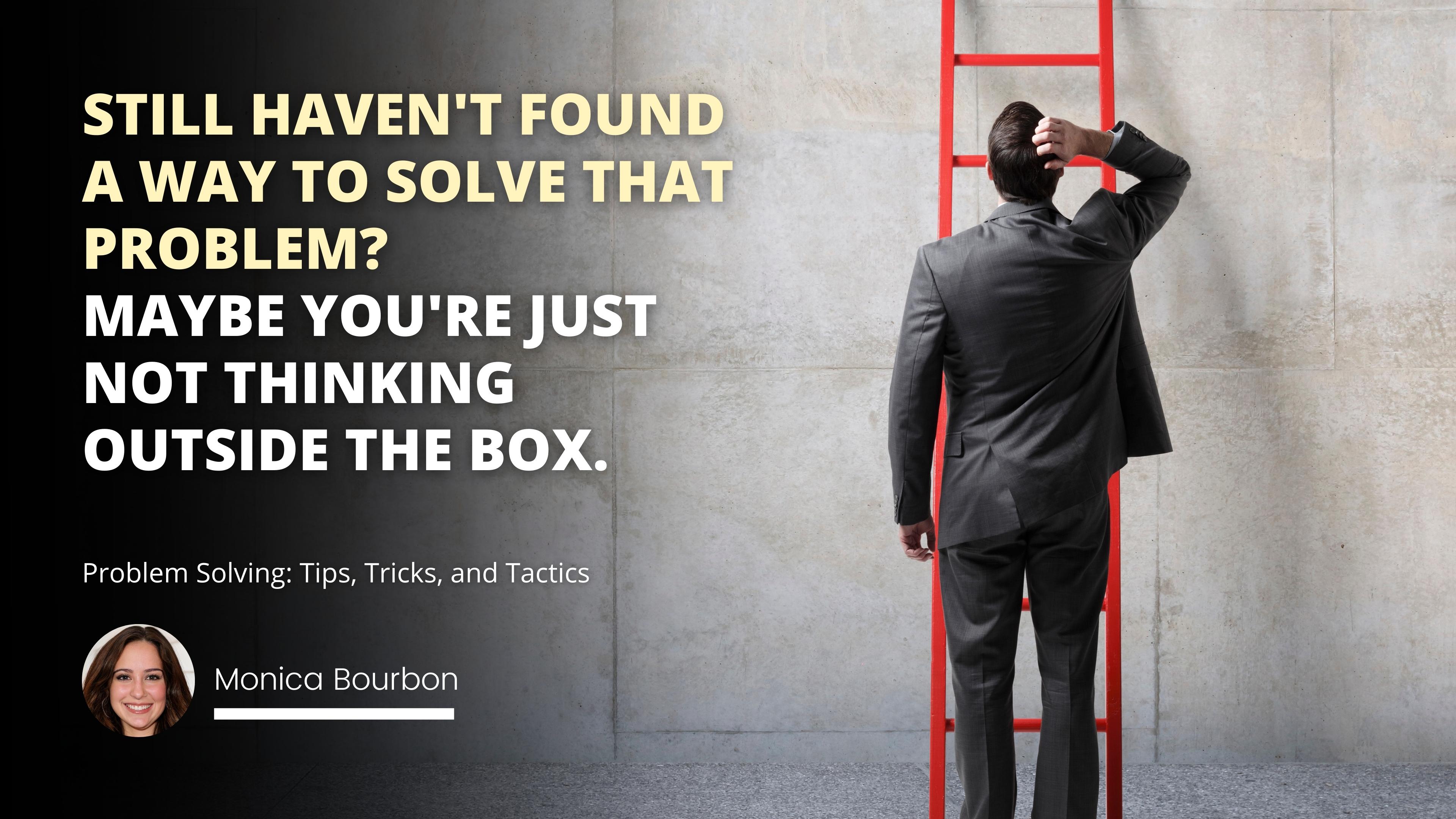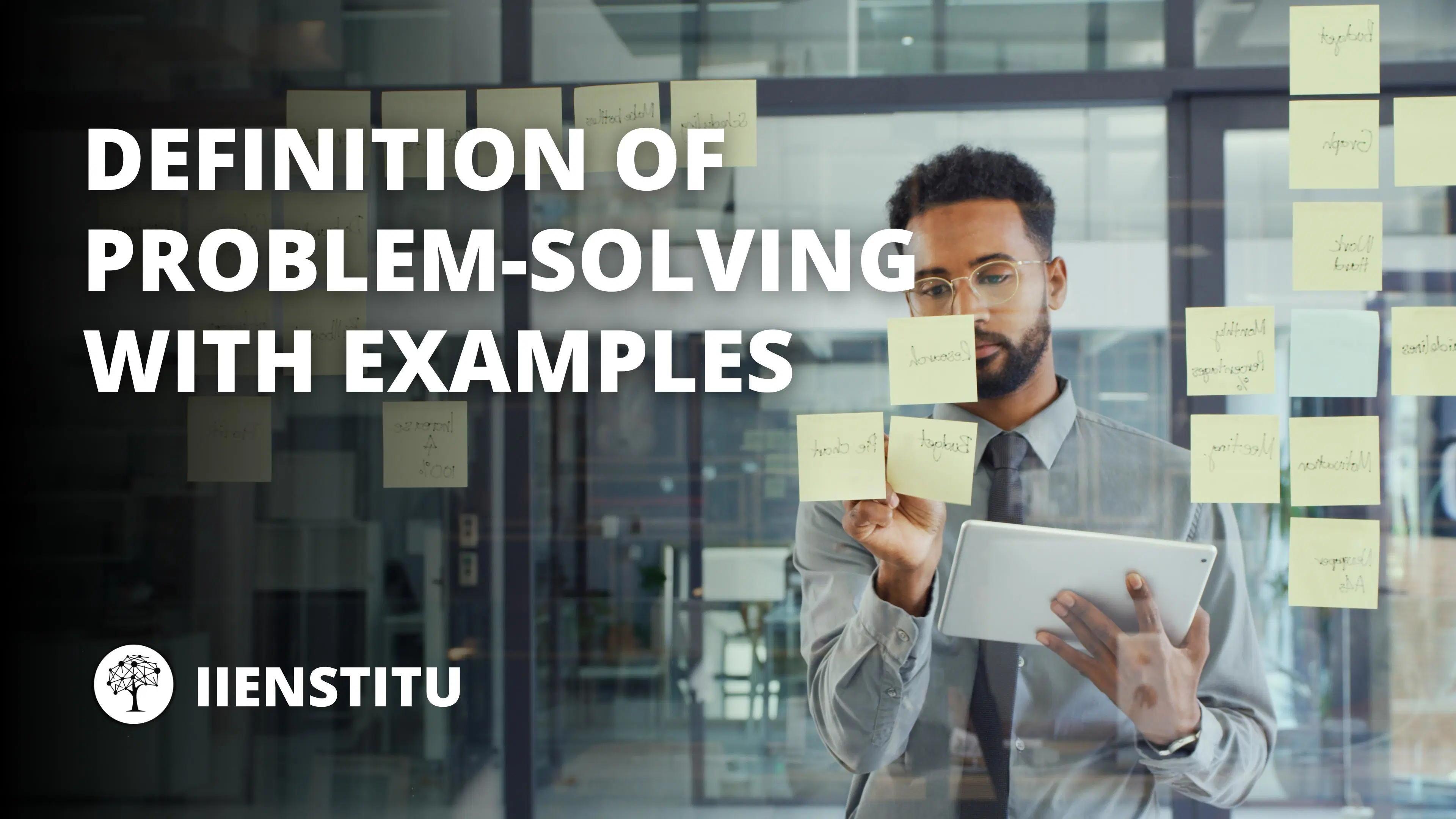
Problem-solving is something that everyone does daily, whether you realize it or not. Moreover, problem-solving is so vital that all branches of mathematics and psychology are devoted to it. But what exactly is problem-solving? And how can you go about tackling complex problems in your own life?
This blog post aims to provide a clear and concise definition of problem-solving and examples of how it can be applied in various situations. So read on to learn more!
Definition of problem-solving: the process of finding a solution to a problem.
This can involve various steps and strategies, such as breaking down complex problems into smaller parts, identifying patterns or trends in the data, brainstorming potential solutions, testing these solutions to see which ones work best, and refining and iterating on the most successful solutions.
Problem-solving is a critical skill for any product designer.
One example of problem-solving is designing new products or processes for a company. For example, imagine being a product designer for a medical device company. As part of your job, you might be tasked with designing new products or improving existing ones to make them more efficient, affordable, and user-friendly. You would need to develop problem-solving skills in several key areas to do this effectively.
When faced with complex problems, good problem solvers need to be able to break down those challenges into smaller, more manageable parts. For example, this might involve evaluating the current design of a product in terms of factors like ease of use, safety features, and potential areas for optimization.
To successfully redesign these products, problem solvers must also have a strong foundation in data analytics tools and techniques that enable them to identify patterns or trends and make data-driven decisions.
Ultimately, problem-solving is all about creative, critical, and analytical thinking, combined with the ability to take action to achieve effective results. Whether you are working on a new product design or trying to improve an existing one, having the skills necessary for problem-solving is crucial for success in any field.
Next, you need to be able to brainstorm and problem-solve effectively. This might involve identifying the specific problem or challenge you are trying to address and developing a range of potential solutions. You might then need to test these ideas through user testing or prototyping to see which ideas work best. Through this process, you can gain valuable insights into your target audience and refine your design decisions based on feedback from colleagues or customers.
Ultimately, problem-solving is at the heart of any successful design process, and the ability to think critically and innovate is essential for success in this field.
Designing a product requires problem-solving skills, and being able to refine and iterate on those solutions is essential for creating an effective final design. This might involve making minor tweaks to the design based on user feedback, or it may require a complete redesign, if necessary, to better address the needs of your users.
Regardless of whether you are modifying your existing design or starting from scratch, the ability to carefully evaluate, analyze, and refine your ideas is key to creating a high-quality product. So if you are looking to improve your design skills and become a more effective problem solver, learning how to iterate and refine your designs effectively can help take your design process to the next level.
Regarding problem-solving, there is no single right or wrong approach. Instead, the key is understanding the problem and thinking creatively about possible solutions. Whether working in engineering, design, business, or medicine, learning to solve problems effectively can be a critical skill for success. And with practice, anyone can develop this ability and tackle even the most complex issues with confidence and success.
At the heart of problem-solving is clearly understanding what needs to be accomplished. This often involves extensive research and exploring all options before choosing a course of action.
Next, remaining flexible and open to new ideas and possibilities is essential as you work towards finding a solution.
Finally, problem-solving requires thinking critically about your approach and making adjustments when necessary rather than stubbornly sticking to one plan or method. With these core skills in mind, anyone can develop their problem-solving abilities and become an effective problem-solver in any field or context.
What is problem-solving, and what are its key components?
Problem-solving is the process of identifying and addressing a problem or challenge. This can involve using critical thinking, creativity, and analytical skills to identify the underlying causes of pain, generate potential solutions, and evaluate those solutions to determine the best course of action. Some critical components of problem-solving include identifying the problem itself, brainstorming possible solutions, analyzing the potential impact of those solutions, and implementing a plan of action.
Additionally, problem-solving often involves working collaboratively with others to get valuable input and feedback as you move through the problem-solving process. Ultimately, practical problem-solving is crucial for success across many different fields and contexts, from engineering and design to business and healthcare.
How can you go about solving a problem effectively and efficiently?
There is no single right or wrong approach to problem-solving; the key is to understand the problem at hand and approach it creatively, flexibly, and analytically. This can involve conducting thorough research and gathering as much information as possible about the problem, brainstorming potential solutions, evaluating those solutions based on their feasibility and impact, and working collaboratively with others to get input and feedback along the way.
How To Develop Problem-solving Skills Through Constant Vocalization
Strategic Benchmarking Techniques For Performance İmprovement
Other functional problem-solving skills include:
Remaining open to new ideas.
Thinking critically about your approach and solutions.
Being willing to make adjustments as necessary to achieve the best possible outcome.
With these strategies in mind, anyone can develop their problem-solving abilities and become more effective and efficient in solving problems across various fields and contexts.
What are some standard problem-solving techniques that can be used in various situations?
Many different problem-solving techniques can be used depending on the situation and context. Some common approaches include breaking down a problem into smaller parts and tackling each piece individually, using creative brainstorming to generate and evaluate new ideas, seeking input from others to get valuable feedback, utilizing analytical tools and methods to examine evidence and data, and testing and refining solutions to a problem to optimize results.
Additionally, problem-solving often involves incorporating feedback from others and adapting your approach as needed based on new information or insights. Whether you are tackling a complex problem at work or addressing a personal challenge, these strategies can be helpful tools for approaching virtually any situation with confidence and efficiency.
How can you stay motivated when facing a difficult or complex problem?
You can use many strategies to stay motivated when faced with a complex problem to solve. Some critical approaches include breaking down the problem into smaller pieces and focusing on one piece at a time, setting clear goals and milestones for yourself, utilizing problem-solving tools and techniques to help guide your approach, engaging in regular self-reflection to stay focused and motivated, and seeking support and feedback from others as needed.
Additionally, it can be helpful to set aside time for rest to recharge your mental resources and approach problem-solving with fresh perspective and energy. With these strategies in mind, you can effectively manage the challenges that inevitably arise when solving complex problems and stay motivated and focused as you work towards your goals.
What potential roadblocks or challenges can occur during the problem-solving process, and how can you overcome them?
Some many potential roadblocks or challenges can occur during the problem-solving process, such as difficulty thinking creatively about possible solutions, lack of support and resources for problem-solving efforts, conflicting ideas and opinions among team members, and complicated emotions or feelings when facing a problem.
To overcome these challenges, it is essential to remain open-minded and flexible throughout the problem-solving process, focusing on the ultimate goal while also being willing to make adjustments as needed.
Additionally, it can be helpful to seek input and feedback from others, involve critical stakeholders in problem-solving efforts whenever possible, and use problem-solving tools such as brainstorming, critical thinking, and analytical problem-solving methods to guide your approach. With these strategies in mind, you can effectively overcome the challenges that may arise when solving complex problems and stay motivated and focused on achieving your goals.
How do you know when a problem has been solved successfully, and what are the possible implications of this?
No single, definitive marker indicates when a problem has been successfully solved. Instead, the problem-solving process can be viewed as an ongoing and iterative process, with problem-solving often involving several cycles of analysis, evaluation, and revision. In general, this may include identifying key problem areas or factors, developing potential solutions to address those problem areas, testing and refining those solutions based on feedback or input from others, and ultimately making the decision to move forward with a final solution.
As you continue through this process, you must remain open-minded and flexible in your approach, focusing on problem-solving goals while also being willing to adapt your strategy as needed.
How can you improve your problem-solving skills, and what resources or strategies can help you do so?
Some many approaches and resources can help you to improve your problem-solving skills. Some key strategies include seeking out training or mentorship programs related to problem-solving, utilizing problem-solving tools and techniques such as brainstorming and critical thinking, engaging in regular self-reflection, and seeking support from others when needed.
Additionally, it can be helpful to set aside time for rest to recharge your mental resources and approach problem-solving with fresh perspective and energy. With these strategies in mind, you can effectively develop and hone your problem-solving skills over time, allowing you to successfully address the complex challenges that arise in all areas of life.
Problem-solving is a part of everyday life. Whether fixing a flat tire or trying to figure out how to get your dream job, everyone faces problems large and small. The better you are at problem-solving, the more likely you will succeed in whatever you're pursuing.
Our course on problem-solving will give you the tools and techniques you need to become an expert problem-solver. We'll show you how to identify different types of problems, approach them using various methods, and select the best solution. So join us today and become the problem solver you always knew you could be!

Frequently Asked Questions
What is problem-solving?
Problem-solving is identifying and addressing issues or challenges to achieve the desired outcome. This can involve tackling complex problems that require creative thinking, collaboration, analysis, and other problem-solving skills.
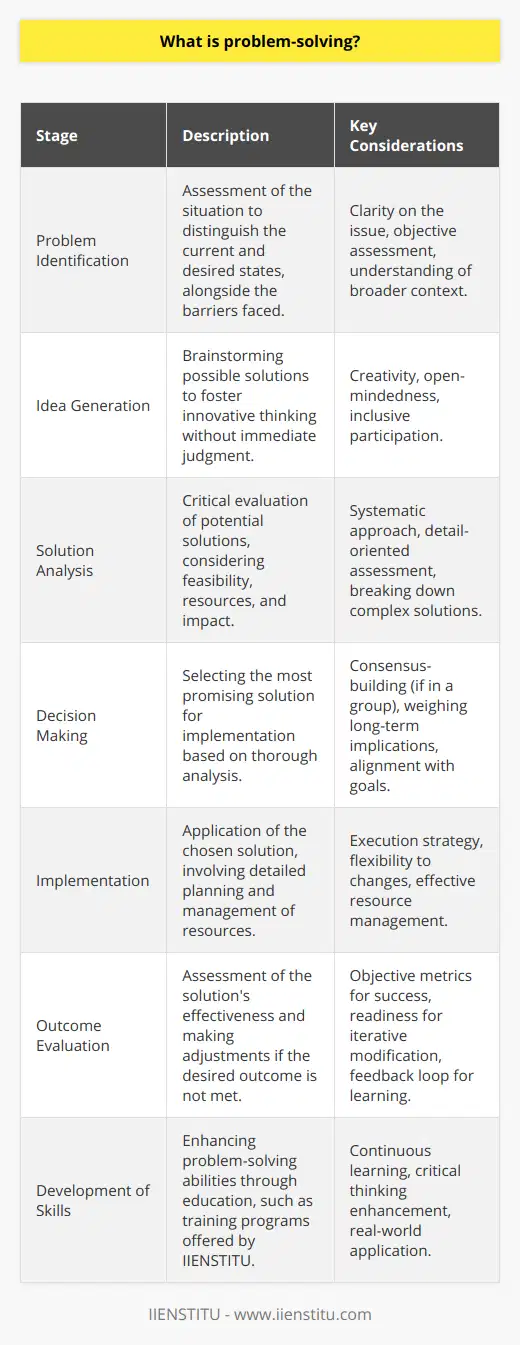
Why is problem-solving important?
Problem-solving is essential for success in many areas of life, from professional pursuits like starting a business or pursuing a new career path to personal goals such as losing weight or improving relationships. By developing strong problem-solving skills, you can become more confident and effective in your ability to tackle challenges and achieve your goals.
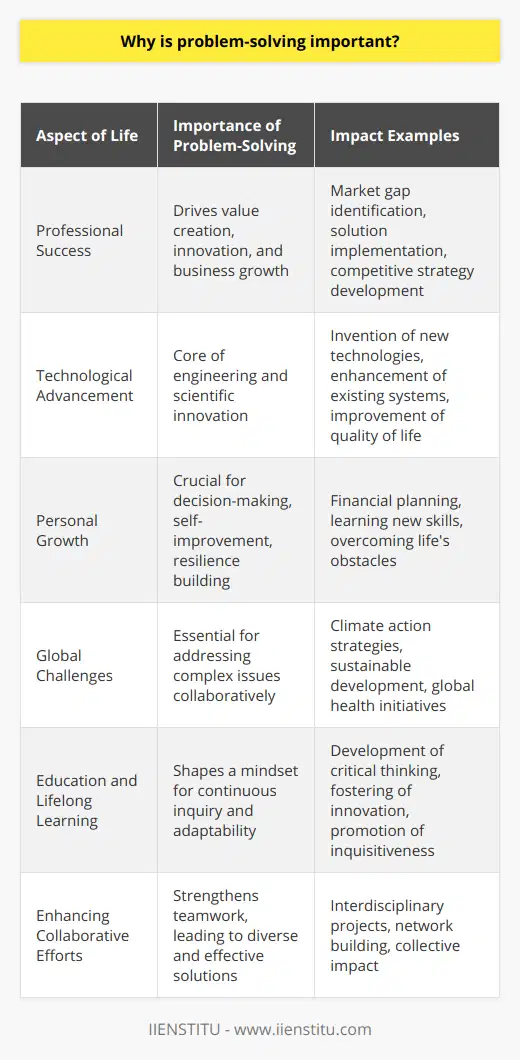
How can you improve your problem-solving abilities?
Some many strategies and tools can help you to become a more effective problem solver. Some critical approaches include seeking training or mentorship programs, using problem-solving techniques like brainstorming and critical thinking, engaging in regular self-reflection, and seeking support from others when needed.
Additionally, it is essential to ensure that you are well-rested and well-nourished, as this can help optimize your mental resources for problem-solving. With these tips in mind, you can become a more skilled and effective problem solver over time, empowering you to tackle the complex challenges that arise in all areas of life.
